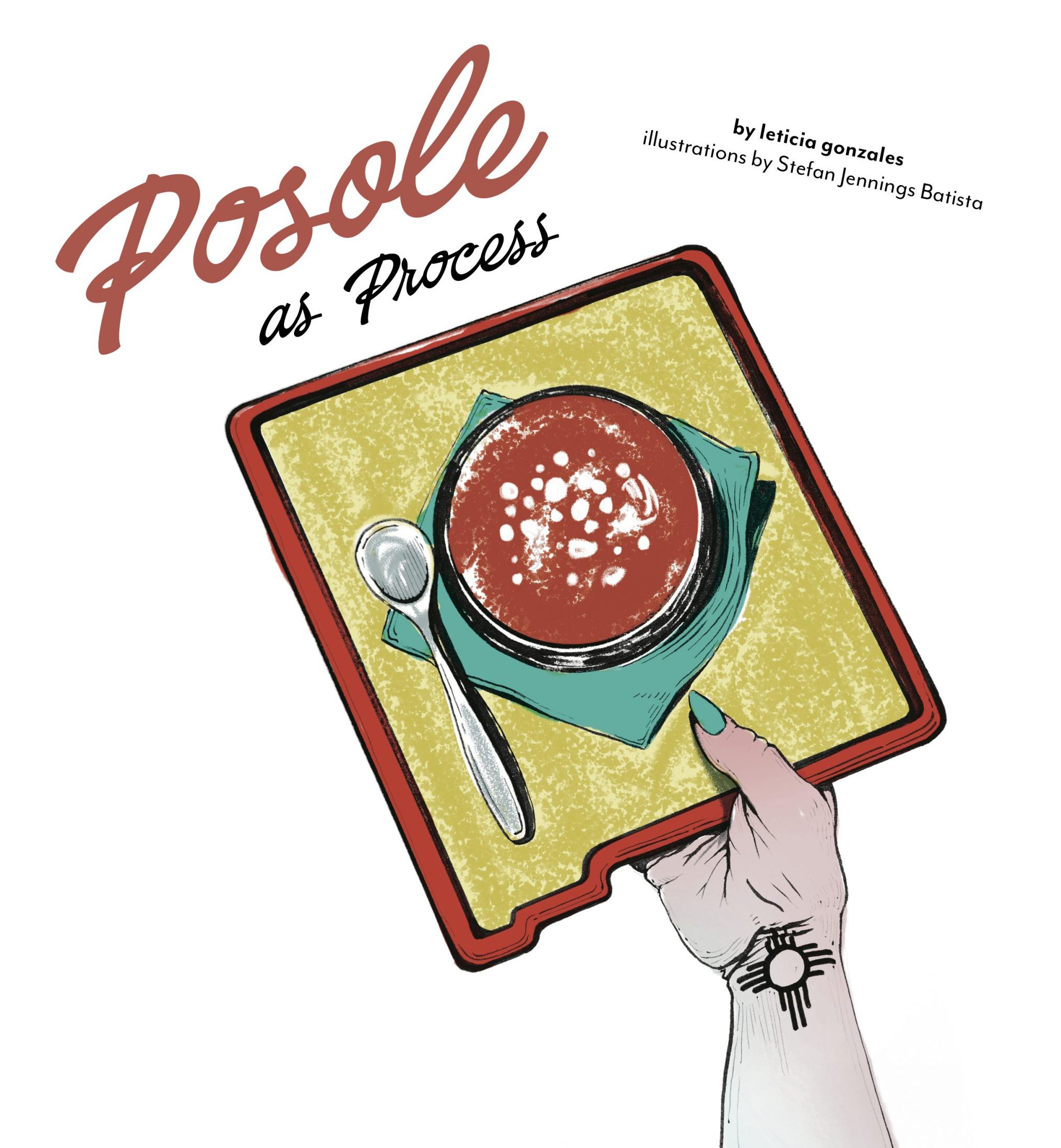
A few years ago, while playing music at the Santa Fe Farmers’ Market, I found myself in possession of a bag of frozen blue-corn posole—and no idea what to do with it. My family makes posole for Christmas every year, and I’ve eaten it with countless enchilada, chile relleno, and carne adovada plates since I was old enough to tolerate capsaicin (embarrassingly late for me, I’ll admit), but I had never considered making it myself. Okay, that’s a lie. Once, my good friend had me over for a tamalera and we ate posole “the Mexican way,” as she delicately put it for me—a clear broth made beautiful by the presence of small slicks of pork fat, and finished with crunchy, shredded cabbage; floral, dried oregano; sweet/hot thin-sliced radishes; and slices of cold, creamy avocado—and I thought, “Hey, I should learn to make posole.” But between that moment and the one where I found myself holding a very cold, perspiring bag of nixtamalized corn had come countless other moments of eating the dish the way I’m used to—which has never inspired me to become a great posole chef.
Like most things, the dish we refer to as posole—how to make it, whether it’s good, even what it is (dried or canned? pork or beef? vegetables or no vegetables?)—lends itself to debate. Here in New Mexico, most people I know make posole the way my parents do. The process starts with dried posole, usually the ubiquitous Bueno brand found in the “Hispanic Foods” aisle of most grocery stores—though places like El Paisano or even Food King in Santa Fe often carry many other exciting options, and specialty grocers like Kaune’s in Santa Fe have been known to carry beautiful heritage corn varieties often grown locally or semi-locally.
The dried posole is boiled to reconstitute, and pork, dried chile pods, and oregano are added during the time it takes the corn to puff up again. In my house, it’s served with a heartier chile caribe or molido on top. This process—minus the chile—seems to be one that is fairly common to North American cuisine, from hominy stews to sagamité. The word hominy being derived from the Powhatan phrase for processed corn gives you some idea of its importance in both modern and precontact Indigenous (as well as in non-Indigenous) North American diets. I find New Mexican posole to be very starchy, and, in general, the flavor profile to be somewhat one-dimensional, showcasing the texture of the corn itself—perfect as a toothy complement to silky refritos or pillowy, hearty frijolitos pintos and dusky, smoky, chile rellenos (for instance).
But as a dish by itself, New Mexican posole has never quite done it for me. So when I was given this beautiful blue-corn posole, I did what I do best: research. Posole, I came to see, is genius in action. When the pericarp (or outer cell wall) of a grain is removed, the vital nutrients become accessible where before they were not. Our predecessors found a way to access the most nutrient-dense parts of corn by soaking and cooking it in an alkaline solution—often made with lime-rich ashes—before preparing as a dish. Thus, posole—corn that has been made more nutritious and easier to digest—was born. Since its discovery, this process has been shared and practiced throughout Central and North America, and the question of how to prepare and serve the resulting foodstuff (posole or hominy) is one for the ages. I hope we never stop debating that.

I start—usually in the morning, when it’s still crisp and cool, since the process is so long—by setting the posole to simmer in water, the total time the corn needs to soften being around three or four hours. While that’s going, I make a light chicken broth, building in flavor by using butter to sauté fresh onions and garlic. I add bone-in, skin-on chicken thighs—rubbed with salt, pepper, and cumin—to the alliums while they’re still golden, searing the meat before they’ve caramelized. Once I have a nice layer on the meat, I cover everything with water and bring to a boil; I reduce the heat and cook low and slow (barely a simmer) until the chicken is falling apart on a fork, which is the sign to remove the chicken from the pot and shred (use two forks to save your fingertips!). By this time, the posole has been simmering for well over two hours—about half of the recommended time—and should be reaching the beginning of its tender phase. I refrigerate the chicken meat so it won’t overcook, and add the bones and skin back to the stockpot, leaving it to simmer for the rest of the time the posole is tenderizing. Around hour three of simmering, I rough-chop green chile (fresh if you’ve got it, frozen if you don’t, but always landrace varieties for me) and add this and oregano to the corn. I start tasting the corn around this time, checking that it has started to open, but hasn’t popped all of the way (I prefer mine still rather intact). The final phase of the operation is combining stock, tender posole, and chicken, and letting it all boil together for forty-five minutes to an hour. Add to this caramelized, blue-cornmeal-dusted onions (done in butter, of course), and your choice of garnish: I love cabbage, thin radish slices, and avocado.
This dish has taught me the importance of beautiful ingredients and attention to detail and process. I have been reminded—time and time again—that mindful preparation is key to a beautiful dish, and timing is everything; and for the first time in my life, I was connected to the genius of my own cultural and ethnic heritage as it has come down to me through the ages. Posole as process frees each of us up to add our own recipes to the proverbial book of posoleras through the ages—I hope you’ll give it a shot too.
leticia gonzales
leticia gonzaleslives and works in Santa Fe, New Mexico.


